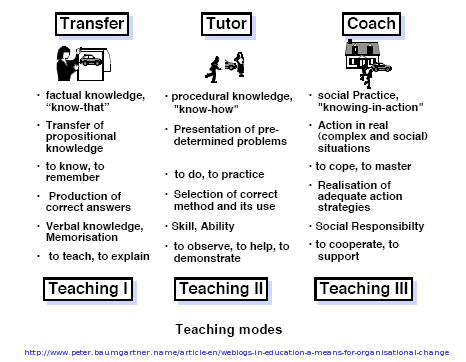Notes from the UOC UNESCO Chair in Elearning Third International Seminar. OER: Institutional Challenges)
Thursday, November 23, 2006
Case Study 2. Massachusetts Institute of Techonolgy. Unlocking Knowledge, Empowering Minds
Shigeru Miyagawa, OpenCourseWare Advisory Committee, MIT
Move away from the MIT.com (dot.com) approach. MIT OCW is, no way, a means to get revenues: on the contrary, the participants are driven by the aim of sharing.
Open Educational Resources: technological aspects
Miguel Ángel Sicilia, Information Engineering Research Unit, Alcalá University
Providing the sources is crucial so things are really “open”.
To manage the licenses, Open Digital Rights Language:
http://xml.coverpages.org/odrl.html
Reusability depends on the context: the more contextualized the learning object, the less reusable, but more usable. So, should we reward reusability, even if there is a trade-off with usability?
Opennes (in technology issues) should bring us from single opencourseware sites to federated ones and brokers… And standards are already ready.
Open Educational Resources: economic aspects
Peter Baumgartner, Department for Interactive Media and Educational Resources, Donau-Universität Krems
From a strictly educational point of view, it’s crazy to think that we can create the tiniest learning objects, so we can build with them bigger educational resources, namely “courses”. Not even Lego — to follow the usual metaphor  (118 Kb) — provides tiniest one size pieces: there are different sizes of pieces, and even different shapes. We should rethink the idea of granularity.
(118 Kb) — provides tiniest one size pieces: there are different sizes of pieces, and even different shapes. We should rethink the idea of granularity.
Assumptions:
- The quality of educational settings is a mix of content and a learning environment
- different types of educational resources support different kinds of learning environments, and vice versa
Three teaching modes:

Canned content is not (necessarily) open content. And content varies widely whether the institution promoting the open content is public or private, and whether it is about virtual learning (autonomous learner) or blended learning (educational support).
Why open content?
- for “a better world”
- for reputation
- for content: so I can mix it with other open content
- for other services: I give you content and you give me feedback on how it worked / you give me medatada / etc.
Barriers
- copyright infringement
- material has to be improved for general use: it was ok for my internal use at my lecture classes, but opening means public exposure, so it should be improved
- print is better than web
- lack of knowledge
- giving away content can mean giving away business opportunities
UOC UNESCO Chair in Elearning Third International Seminar. OER: Institutional Challenges (2006)
If you need to cite this article in a formal way (i.e. for bibliographical purposes) I dare suggest:
Peña-López, I. (2006) “UOC UNESCO Chair in Elearning Third International Seminar. OER: Institutional Challenges – Report (II)” In ICTlogy,
#38, November 2006. Barcelona: ICTlogy.
Retrieved month dd, yyyy from
https://ictlogy.net/review/?p=486
Previous post: UOC UNESCO Chair in Elearning Third International Seminar. OER: Institutional Challenges – Report (I)
 RSS feed for comments on this post.
TrackBack URI
RSS feed for comments on this post.
TrackBack URI

